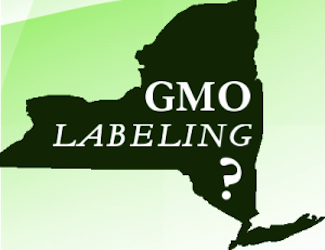
A report released last week by the USDA finds using GMO crops does not always produce greater yield and "high farmer use of a popular herbicide [glyphosate] on GMO crops is a cause for ongoing concern.” What's significant here is not that any of this is news, but that the government is admitting it.
"We are not characterizing them (GMO crops) as bad or good. We are just providing information," said Michael Livingston, a government agricultural economist and one of the authors of the report, prepared by the USDA's Economic Research Service (ERS). The ERS researchers said over the first 15 years of commercial use, GMO seeds have not been shown to definitively increase yield potentials, and "in fact, the yields of herbicide-tolerant or insect-resistant seeds may be occasionally lower than the yields of conventional varieties," the ERS report states. Herbicide use on GMO corn is rising, the report states. Herbicide use on GMO corn increased from around 1.5 pounds per planted acre in 2001 to more than 2.0 pounds per planted acre in 2010. Over-reliance on glyphosate has translated to an increase in weed resistance, which makes crop production much harder. Glyphosate is the main ingredient in Monsanto's Roundup herbicide, and its use has contributed to the glyphosate resistance seen in 14 weed species and biotypes in the United States, according to ERS. Perhaps the most significant result of the study is that several researchers found "no significant differences" between the net returns to farmers who use GMO herbicide-tolerant seeds and those who use non-GMO seeds. So, the next logical question is: why use GMO seeds? Let's hope someone in the USDA can reason this out, then persuade everyone in the federal government -- from the president on down -- to stop backing Monsanto and its ilk. NY, MD and FL Try Again for GMO Labeling Bills Three more states are moving towards mandatory GMO labeling, in whole or part, after previously failing to pass one. Last month, a Florida senator filed a mandatory GMO labeling initiative, and next month, New York and Maryland will be holding public hearings on GMO labeling bills.
New York's bill would require mandatory labeling on all food with GMO ingredients, while Maryland's would only require it for specific raw foods and packaged foods that are partially or entirely produced from GMO ingredients. Last year, a New York GMO bill died late in the session. Bills are back in both the Senate and the Assembly, and will get hearings in both chambers, probably in late March. Maryland's bill is scheduled for a hearing on March 11. The Grocery Manufacturers Association, Monsanto and other biotechs are sweating over the growing movement among states for mandatory labeling, which would make it virtually impossible for them to deny that a product contains GMOs. They would prefer a federal, voluntary law to preempt the states, and have partnered with 28 food and agricultural organizations to persuade Congress to draft it. In 2013, nearly half of all U.S. states had introduced bills requiring labeling or prohibiting genetically engineered foods, according to the Center for Food Safety. Plutonium Leak Coming from NM Waste Dump There's a place in New Mexico used as a nuclear dump, with a fancy name: a Waste Isolation Pilot Plant, or WIPP. Located near a town called Carlsbad, it's basically a deep hole leading to a facility beneath the magnificent New Mexico landscape. There, the government deposits waste materials left over from research and production of nuclear weapons. It's supposed to hold out for 10,000 years. But two weeks ago, managers of the facility noticed that there was a radiation leak, which means radioactivity being released from the nuclear waste containment area to the outer environment. This is no ordinary leak -- it contains plutonium, the bad boy of nuclear materials. Officials there claim to not know how it happened, but it may be that a ceiling collapse crushed radioactive waste barrels. However it happened, the radiation took a lot less than 10,000 years to get out. And that is the nuclear problem. No matter how safe anyone claims it is, radiation is extremely difficult to contain. And it's so toxic it's difficult to imagine its potency. Helen Caldicott, a doctor and one of the world's leading anti-nuclear activists, says that just one microgram or plutonium, or one-millionth of a gram, will cause cancer if it lodges in someone's lung. A gram is about the weight of a paper clip, so we're talking about a particle of dust. And now this stuff is once again loose in the environment, and scientists who operate the waste dump have no idea how to stop it from escaping. They claim to not even know exactly where it's coming from within their own facility. One last bit: the place is called a "pilot plant" because it's part of creating a protocol for making such facilities in the future. Nice experiment. TEPCO Admits Biggest Leak in Months TEPCO, the company that owns the Fukushima Daiichi plant in eastern Japan, admitted that the largest leak in recent history had occurred earlier this month, releasing 100 tons of highly radioactive water. But they claim it is unlikely the radiation would reach the Pacific Ocean. They seem oblivious to what humans have known forever: water always finds a way to the ocean. Earlier this month, TEPCO disclosed that freezing temperatures may have caused a crack in the concrete floor of a water storage tank used to store water for cooling the damaged reactors. Workers on patrol discovered two cracks in the concrete and that contaminated water from the melting snow surrounding the tanks may have seeped into the ground. Just last August, TEPCO reported that 300 tons of contaminated water had leaked from water storage tanks nearby. ...and will be re-analyzing old samples for radiation TEPCO has recently said that it will be re-analyzing 164 samples taken at Fukushima last year. Due to errors in its testing of beta radiation (which includes Strontium-90, a radionuclide linked to bone cancer), TEPCO claims that previous readings significantly undercounted radiation levels. New tests of the samples taken from April through September of 2013 will be run and the results featuring the corrected beta radiation levels will be published. Earlier this month, TEPCO admitted to withholding record high radiation levels detected in a groundwater sample taken 25 meters from the ocean last September. ...as radiation once again found off of North America Radiation from the Fukushima disaster has been detected in water offshore Canada. Researchers at the annual American Geophysical Union's Ocean Sciences meeting in Honolulu, Hawaii, said that Cesium-134 and Cesium-137 have been detected offshore of Vancouver, British Colombia. While the levels are below the government's safety limit for drinking water in Canada, that limit does not take into account that there is no safe dose of radiation, nor that each dose adds to whatever is already in the body. Multiple sources have confirmed that the radioactive plume released in 2011 is now reaching the west coast of North America. Predictive computer models show that a plume of radiation will reach the U.S. West Coast in early 2014, peaking in 2016. And nuclear industry officials are doing nothing, as of yet, to ensure that the public is informed or prepared. e Wiki | Friends | Editors | Contact Us Copyright © 2013 by Planet Waves, Inc. All Rights Reserved. Other copyrights may apply. Some images used under Fair Use or Share Alike attribution. |

